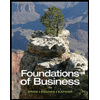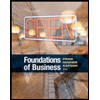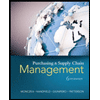
Concept explainers
To explain: Some ways to implement the decisions recommended to BD.
Introduction:The CA grower’s exchange began in 1910 and today represents the world’s biggest tree nut processing companies, serving about 3500+ growers. CA grower’s exchange produces over 80 percent of the world’s almond supply. The company produces almonds and these almonds are marketed through BD growers. BD growers is responsible for new product development, building new customers, finding new uses of the product and finding new opportunities. Roasted almonds, almond milk, nuts and rice cracker snacks are the core products. The company has recently launched a new range of honey-flavored products since honey is gaining popularity as a good alternative to sugar.
Want to see the full answer?
Check out a sample textbook solution
Chapter 9 Solutions
MARKETING:REAL PEOPLE,REAL CHOICES
- What is a good response to this statement? As we know, several global retailers target densely populated regions such as China or India as they represent emerging markets and great potential for maximum profits. As many have stated in this discussion, these retailers tend to exploit workers in these regions by utilizing the nation's lax labor laws, health and safety standards, as well as their lack of rights within the region. However, some do not discuss the cultural appropriation or pandering that these companies exercise in an effort to maximize their profits. There are instances of companies utilizing cultural elements such as symbols, traditional designs, or culturally significant images on mass produced items without understanding the meaning or showing respect to that significant meaning. Retailers sometimes utilize these culturally significant images or symbols to maximize their profits without acknowledging where it comes from or giving back to the community they took it from.…arrow_forwardWhat is a good statement to this post? One ethical issue that stood was how global retailers sometimes enter international markets without creating fair partnerships within their distribution channels. In Chapter 15, it talks a lot about the importance of building strong relationships with local intermediaries, but the reality is, some companies just try to dominate the market instead of collaborating. That power imbalance can lead to unfair contracts or local businesses getting pushed out. It’s like they show up, use the local resources and networks to make profit, but don’t invest back into the community or share the success. That’s not right. If you’re going to expand globally, you should be willing to build genuine partnerships, respect the local market, and not just focus on control and profit (Cateora, Gilly, & Graham, 2020). It’s all about being ethical and intentional with how you grow.arrow_forwardWhat is a good response to this comment? One major ethical issue global retailers face when expanding into markets like China and India is the risk of worker exploitation. Many retailers outsource production to factories in these regions because of lower costs, but those savings often come at the expense of labor rights. Long hours, unsafe conditions, and poverty wages are still common, especially when oversight is weak (Locke, 2013). Companies often claim ethical standards but turn a blind eye to what happens deeper in their supply chains. This disconnect damages credibility and harms real people. Ethical branding should not stop at borders. If a brand markets fairness or sustainability, it must apply those values globally or risk being seen as performative (Crane et al., 2019).arrow_forward
- What is a good response to this comment? One major ethical issue global retailers face when expanding into markets like China and India is the risk of worker exploitation. Many retailers outsource production to factories in these regions because of lower costs, but those savings often come at the expense of labor rights. Long hours, unsafe conditions, and poverty wages are still common, especially when oversight is weak (Locke, 2013). Companies often claim ethical standards but turn a blind eye to what happens deeper in their supply chains. This disconnect damages credibility and harms real people. Ethical branding should not stop at borders. If a brand markets fairness or sustainability, it must apply those values globally or risk being seen as performative (Crane et al., 2019).arrow_forwardElizabeth Corp. sold 3,800 units of its product at a price of $92.25 per unit. The total variable cost per unit is $63, consisting of $41.50 in variable production cost and $21.50 in variable selling and administrative cost. Compute the manufacturing margin for the company under variable costing. a. $192,850 b. $94,960 c. $196,140 d. $333,900 e. ($139,180)arrow_forwardCompany: Home Depot Who is the company’s target market? What type of competitive advantages do they hold if any? SWOT analysis?arrow_forward
- Your memo should include a beginning, middle and end. The beginning section of the memo should serve as an opening summary of the contents of your memo. It should be clear and concise and lay out the goal of the analysis that is presented in the memo. The main purpose of the opening is to allow the manager, in this case Mrs. Walker, to make a quick scan and determine the subject of the memo. The middle section of the memo should describe the current situation, the data used in the analysis, the method of analysis, the model used to analyze the questions and the results that were found. The discussion of the current situation should be brief, providing a context for the analysis, but not rehashing a lot of the information that the audience for the memo would already know. (For example, in the case you do not need to include the entire history of the business.) In describing the data, you should indicate which data you used and why you used it (and why you did not use some of the…arrow_forwardEthical decision making includes several influential factors, Except Question 15Answer a. Extent of problems b. Probability of Harm c. Social consensus d. All of the above e. Top management actionsarrow_forward_____ is the strategy of increasing sales by introducing new products into new markets. Question 10Answer a. Product penetration b. Market penetration c. Product development d. Product developmentarrow_forward
- Go to the following link: Forbes TOP companies with the Best CSR reputations. https://www.forbes.com/sites/vickyvalet/2018/10/11/the-worlds-most-reputable-companies-for-corporate-responsibility-2018/#480e6d813371 Be prepare to share your findings in class. Please write your answers in complete sentences. Choose an organization with best CSR Visit the organizations website and copy link to their website below Does the company have a societal marketing orientation, or is it a company that is known solely for their corporate giving? Explain. How is this company practicing CSR? Provide examples Discuss how customers would know this company is a socially responsible company by looking at their website. Please provide examples of your findings below.arrow_forward1. Explain the role of social media in communication? 2. What are the three types of communication thru social media? 3. Provide a picture demonstrating one type of social media communication for an organization of your choicearrow_forwardFind a commercial of your choice on YouTube. www.youtube.com (Make sure it is appropriate). Tell me about the target market of your organizations marketing mix. Copy the video link here: Who is the organization? What is the product or service? Who is the specific demographic for your target market? List all and give me a brief explanation how you came to your conclusion. Example: Teens? Generation x? Y? Baby boomers? Who? Are there any social factors that influence the specific market? Are there any ethnic factors? Are there any economic factors? Are there any political and legal factors? Example: FDA regulations?arrow_forward
- MarketingMarketingISBN:9780357033791Author:Pride, William MPublisher:South Western Educational Publishing
 Foundations of Business - Standalone book (MindTa...MarketingISBN:9781285193946Author:William M. Pride, Robert J. Hughes, Jack R. KapoorPublisher:Cengage Learning
Foundations of Business - Standalone book (MindTa...MarketingISBN:9781285193946Author:William M. Pride, Robert J. Hughes, Jack R. KapoorPublisher:Cengage Learning Foundations of Business (MindTap Course List)MarketingISBN:9781337386920Author:William M. Pride, Robert J. Hughes, Jack R. KapoorPublisher:Cengage Learning
Foundations of Business (MindTap Course List)MarketingISBN:9781337386920Author:William M. Pride, Robert J. Hughes, Jack R. KapoorPublisher:Cengage Learning  Purchasing and Supply Chain ManagementOperations ManagementISBN:9781285869681Author:Robert M. Monczka, Robert B. Handfield, Larry C. Giunipero, James L. PattersonPublisher:Cengage Learning
Purchasing and Supply Chain ManagementOperations ManagementISBN:9781285869681Author:Robert M. Monczka, Robert B. Handfield, Larry C. Giunipero, James L. PattersonPublisher:Cengage Learning





